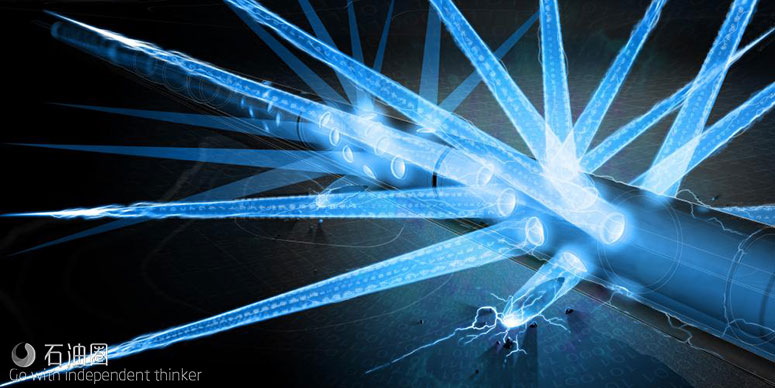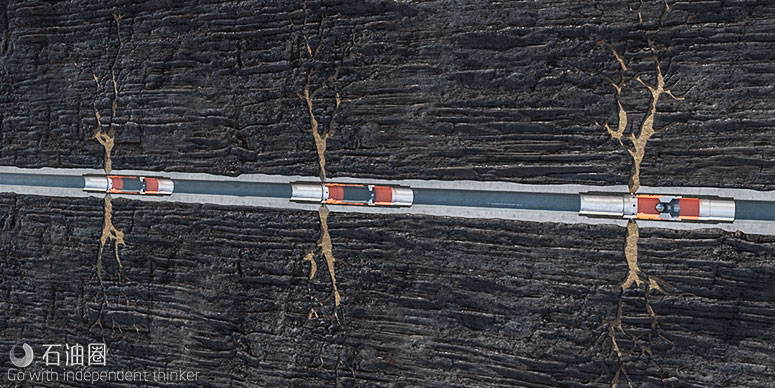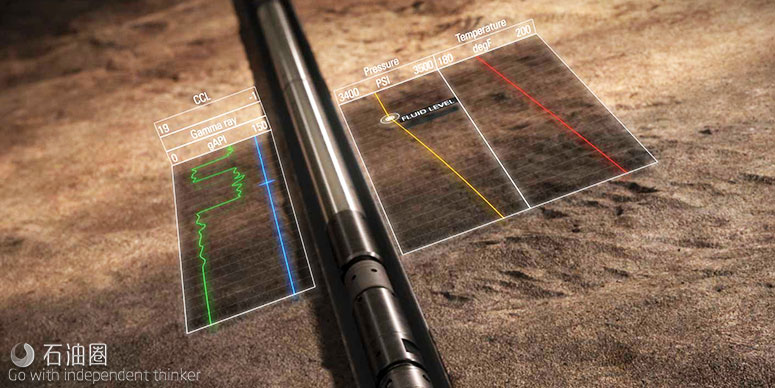Innovative technology designs are increasing efficiencies.
PERFORATING SYSTEMS TECHNOLOGY SHOWCASE:
Operators are constantly searching for the latest innovations to maximize production. The following technologies are some of the latest products and services available to the industry.
Perforating tool simulates and predicts dynamic conditions Built on advanced analysis and job planning data, Baker Hughes, a GE company’s (BHGE) TerraConnect perforating technology, engineered for reservoir conditions, simulates and predicts the dynamic conditions that occur during perforating events (See image above). These simulations predict transient behavior during laboratory testing, translating to optimum job designs that improve downhole results and reservoir contact. Using its PulsFrac software, BHGE optimizes perforation tunnel cleanup with a variety of technologies, including TerraFORM dynamic underbalance optimization services, TerraPERM propellant perforating optimization services and static underbalance techniques. The TerraConnect perforating technology and PulsFrac software provide a perforating design and cleanup operations optimized for the target reservoir. TerraConnect was recently applied on a multiwell project in Southeast Asia where laboratory test results led to product and deployment technique selection. Collaboration with the operator led to continual operational and production improvement over the course of the project, contributing to the ultimate reduction of wells planned by 33%.
Consistent hole size perforating
Horizontal, unconventional wells have revolutionized the industry and fundamentally changed perforating. Consistent hole size perforating has proven highly successful and has become the standard. As production on unconventional wells declines, operating companies are challenged to revitalize these assets through recompletion or refrac methods. Core Lab/Owen has delivered ReFRAC technology to meet this challenge. Mechanically isolated refrac wells with cemented tubulars inside existing well casing are exponentially more complicated to provide consistent holes due to perforating two strings of casing with cement in between. Fracturing is more difficult, resulting in fewer stages per day and increased costs. ReFRAC charges produce optimal and consistent holes to meet these challenges. Two major operators have seen two to three times the number of stages per day completed with fewer perforations. Costs and time on the well were reduced and profit margins increased. Multiple operators are requesting ReFRAC charge technology in this recompletion application.
Perforating system shortens gun length
The DynaEnergetics DS Trinity perforating system offers three charges in a single plane (three-in-a-plane) to shorten gun length and provide formation benefits during the hydraulic fracturing process. At less than 8 in. overall length, the new system is up to 3.5 times shorter than conventional perforating guns, enabling much higher gun counts per stage. Shorter gun lengths also save on running costs by reducing the height requirements for rigup cranes and pressure control equipment. The single-plane charge architecture has been determined to reduce formation breakdown pressure and achieve optimal rates quicker, which can ease wear and tear on fracturing equipment. In addition, single-plane perforating can lead to better fracture geometry in certain formations, enhancing overall well productivity. Recently completed field trials were conducted in partnership with a large U.S.-based independent operator that provided feedback on key features and functionality of the system. More than 1,000 guns were delivered during the field trial process, which was conducted with 100% success rate.
Technology eliminates clogged perforations
Kraken technology is a progressively burning, solid propellant designed to increase penetration, eliminate clogged perforations and overcome near-wellbore damage from compaction caused by traditional perforators. Progressively burning Kraken propellant boosters generate high-pressure gas in the perforation tunnels, which creates fractures that improve well connectivity. Completion engineers who scorecard breakdown pressure, IP/II increase, operating time and safety will observe that the return on incremental investment in enhanced perforating performance routinely exceeds 100%.
Interventionless perforating tool requires no electronic detonation
Nine Energy Service’s FlowGun technology is a stage one interventionless casing-conveyed perforating tool that eliminates the need to run wireline or coiled tubing (CT) and requires no electronic detonation. FlowGun offers an innovative, safe and cost-effective advantage for stage one completions. It offers infinite efficiency, control and flexibility. With FlowGun, operators see increased savings on time and money because the numerous downhole jobs are consolidated into one tool and one crew with no sleeves to shift, no wet shoe required and no electronic detonation needed. An entire phase of completion is eliminated, removing the need to pay for additional water, tank trucking BOP rental, CT, chemicals and labor.
Sliding sleeve tool helps operators avoid risks
While it is a very widely used completion method, plug and perf can have a negative effect on near-wellbore permeability, as the impact stress associated with the outward traveling shock of a shaped charge weakens the rock matrix and increases the risk of sand production. The i-Frac system from National Oilwell Varco (NOV) helps operators avoid the risks inherent in using conventional perforating methods with explosive charges and guns. The i-Frac is a hydraulically operating sliding sleeve tool that is threaded in as part of the production casing. Using a ball or a coil-conveyed tool, the sleeve is shifted, and perforations are exposed to the inner casing from inside; on the outside, perforations are covered up with cement. After this, a pressure increase breaks through the cement and initiates communication with the formation. A single stage can contain up to 20 i-Frac sleeves, with one ball dropped to activate all the sleeves and isolate the zone for stimulation treatment.
The i-Frac sleeves are ball-drop-activated multistage frac sleeves designed for cemented, multiple open/close and openhole horizontal completions.
Perforating gun system increases safety
Schlumberger’s Tempo instrumented docking perforating gun system is the industry’s first perforating gun system to fully integrate a plug-in gun with real-time advanced downhole measurements throughout the operation. This unique combination significantly mitigates operational risk while increasing safety, reliability and efficiency. By generating and confirming dynamic underbalance in the well, the Tempo system effectively removes perforation debris to optimize productivity. First-year deployments include North and South America, the Middle East, Europe and Asia. According to the company, excellent results have been achieved, from understanding the wellbore dynamics during perforation to achieving a 100% fires success rate on all guns deployed without any misfire. In Egypt an operator employed the Tempo system to improve the efficiency of multizone perforating operations in deep wells in the Western Desert. Conventional perforating gun systems had required significant operational time to assemble and arm, and their integrity could not always be verified until at perforating depth, at which point diagnosing any connection failures caused lengthy remedial downtime. The new plug-in gun simplified design saved considerable time, including reducing gun arming time by more than half.
The Tempo system fully integrates a plug-in gun with real-time advanced downhole measurements for monitoring and confirming operations to mitigate risk while increasing safety, reliability and efficiency.

 石油圈
石油圈





